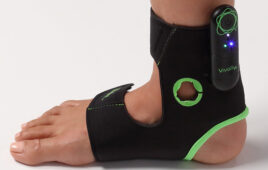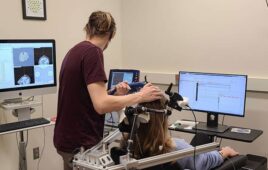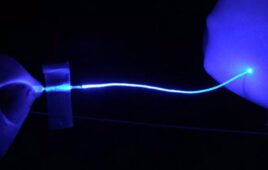A 3D-printed transparent skull implant has been created by researchers at the University of Minnesota. This skull implant would allow researchers the opportunity to watch activity from the entire brain surface in real time. In response, this type of information would strengthen brain research and provide insight on conditions such as concussions, Alzheimer’s, and Parkinson’s disease.
“What we are trying to do is to see if we can visualize and interact with large parts of the mouse brain surface, called the cortex, over long periods of time. This will give us new information about how the human brain works,” said Suhasa Kodandaramaiah, Ph.D., a co-author of the study and University of Minnesota Benjamin Mayhugh Assistant Professor of Mechanical Engineering in the College of Science and Engineering. “This technology allows us to see most of the cortex in action with unprecedented control and precision while stimulating certain parts of the brain.”
Currently, scientists can look at small regions of the brain in order to depict it in detail, but now, researchers are finding that every small part significantly impacts the larger, overall brain.
Dubbed the See-Shell device, researchers have examined how mild concussions in one part of the brain can affect other parts, where the impact will reorganize the brain both structurally and functionally. These studies and experiments have not been done on a human, yet.
Kodandaramaiah says a mouse’s brain is similar to a human’s brain, and the See-Shell could open the door for research, first done on mice, that could provide insight to degenerative brain diseases.
In a video created from the device, changes in brightness of the mouse’s brain correspond to waxing and waning of neural activity. Subdued flashes indicated periods of time when the whole brain suddenly becomes active.
“These are studies we couldn’t do in humans, but they are extremely important in our understanding of how the brain works so we can improve treatments for people who experience brain injuries or diseases,” Timothy J. Ebner, M.D., Ph.D., a co-author of the study and a University of Minnesota Professor and Head of the Department of Neuroscience in the Medical School, said.
The process to create the See-Shell required researchers to digitally scan the surface of a mouse’s skull and then use the digital scans to create an artificial transparent skull that has the exact same contours as the original skull. During the implantation surgery, the top of the mouse skull is replaced with the 3D-printed transparent skull device. This device then allows researchers to record brain activity while also imaging the entire brain in real time.
Another positive to this research is that the mouse’s body did not reject the implant, so researchers could study the same mouse brain over an extended period of time.
“This new device allows us to look at the brain activity at the smallest level zooming in on specific neurons while getting a big picture view of a large part of the brain surface over time,” said Kodandaramaiah. “Developing the device and showing that it works is just the beginning of what we will be able to do to advance brain research.”




